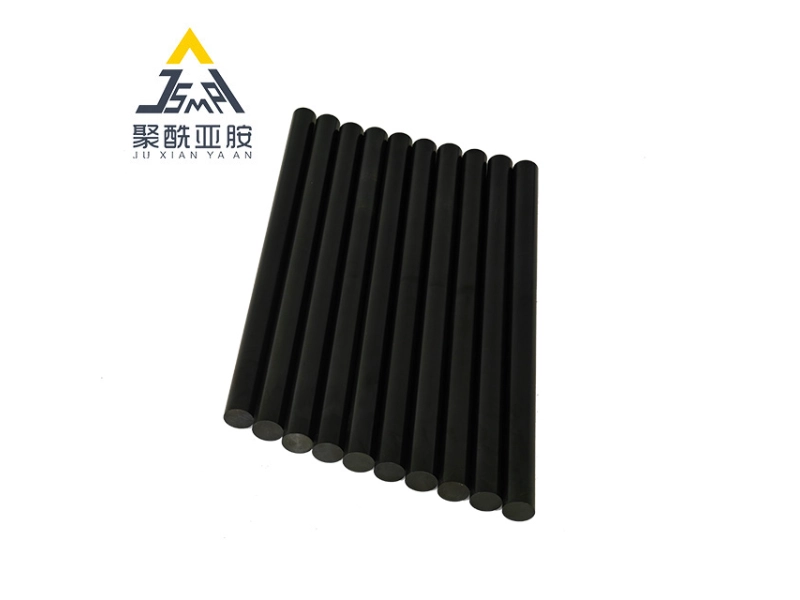The rapid developments within electronic materials are paving the way for novel solutions in multiple industries. Within these advancements, conductive polyimide resins have emerged as a game-changer, particularly in the area of high-performance applications. These resins are recognized for their remarkable thermal stability, mechanical strength, and versatility, rendering them perfect for challenging environments. https://gray-falcon-pq33h2.mystrikingly.com/blog/leveraging-your-strength-of-conductive-polyimide-resin-rods is a notable demonstration of this technology, showcasing unique properties that can enhance electronic designs.
In aviation, where performance and reliability is essential, the use of polyimide rods becomes ever more prevalent. Light yet strong, these rods can withstand extreme temperatures and harsh conditions, rendering them perfect for applications in aircraft and spacecraft. The integration of conductive polyimide rods in aerospace components not just contributes to weight savings but additionally allows efficient electrical conductivity, crucial for advanced electronic systems. Looking ahead, the potential of conductive polyimide resins indicates a transformative shift in how approach electronic materials in high-performance settings.
Overview to Electrically-Conductive Polyimide Resins
Conductive polyimide resins have appeared as a revolutionary material in the electronics industry, notably due to their distinct combination of conductive properties and thermal stability. These high-performance polymers are formulated to integrate conductive fillers, allowing them to maintain their structural integrity while enabling efficient electrical performance. As technology advances, the need for easy-to-handle and long-lasting materials expands, making electrical polyimide resins a crucial player in various applications, including flexible electronic circuits and electrical components.
One of the most remarkable features of electrically-conductive polyimide resin rods is their aptitude for the aerospace industry. In this sector, the requirement for materials that can withstand extreme conditions while providing reliable performance is essential. High-performance polyimide rods merely meet these stringent requirements but also deliver substantial weight savings compared to conventional materials. This makes them well-suited for applications such as thermal insulation, support structures, and thermal management systems where both reliability and performance are paramount.
The versatility of conductive polyimide resin rods reaches beyond the aerospace sector, as they are increasingly being applied in fields such as vehicle design, telecom, and personal electronics. Their ability to be manufactured into various forms and sizes allows for creative designs in gadgets. As research continues to progress in this area, the outlook of electrically-conductive polyimide resins looks bright, leading to next-generation electronic applications that emphasize efficiency and durability.
Superb Polyimide Rods
High-performance polyimide rods have surfaced as a vital material in multiple applications due to their exceptional thermal stability and electrical conductivity. These bars are crafted to withstand extreme temperatures while preserving their mechanical integrity, thus making them ideal for challenging environments. These unique properties allow them to operate successfully in applications where standard materials would collapse, such as in aerospace and advanced electronics.
In the aerospace industry, the need for lightweight and strong materials is critical. High-performance polyimide rods meet this demand by offering the strength and resilience needed for structural components and electrical insulation. These rods contribute to the efficiency and reliability of aerospace systems, where lessening weight can significantly enhance fuel efficiency and overall performance. The ability to retain functionality under harsh conditions positions these rods a preferred choice among engineers and designers in aerospace manufacturing.
Additionally, the versatility of high-performance polyimide rods facilitates customization to accommodate specific applications. Manufacturers can adjust the properties of these rods, like their conductivity and thermal resistance, to meet the precise needs of various industries. As technology advances and the demands for more efficient and durable materials escalate, high-performance polyimide rods are set to assume an essential role in molding the future of electronics and other critical sectors.
Utilizations in the Aviation Industry
Electrically conductive polyimide resin rods are gaining notable attention in the aviation industry due to their outstanding thermal stability and lightweight properties. These characteristics make suitable for high-efficiency applications where traditional materials might fail. Professionals are more and more incorporating these rods in components that require strength and resistance to severe conditions, such as in aviation wiring systems and structural components that face thermal challenges.
The use of conductive polyimide rods is also groundbreaking in the creation of advanced sensors and actuators used in aerospace applications. Their ability to conduct electricity while maintaining mechanical integrity allows for new design solutions. These rods facilitate the downsizing of electronic systems, ultimately contributing to improved performance and efficiency in avionics and in-flight systems.
Furthermore, as the aerospace industry goes on to push the limits of technology with advancements in composite materials, conductive polyimide rods serve as a great complement. They can be seamlessly integrated with various composite structures, enhancing their electrical properties without compromising weight or strength. This integration is crucial for the next generation of aircraft, which demand reduced weight and superior materials to meet stringent fuel efficiency and performance standards.
Emerging Developments in Polyimide Technology
The future of conductive polyimide resins is primed for significant advancements, especially as industries demand more durable and effective materials. Innovations in polymer chemistry are leading to the creation of advanced polyimide rods that demonstrate enhanced mechanical properties and thermal stability. These advancements are critical for deployments in demanding environments, such as space exploration, where materials must endure extreme temperatures and stress while retaining conductivity.
Additionally, the aviation industry is increasingly utilizing conductive polyimide rods into their designs, recognizing the need for light-weight yet robust materials. As aircraft work for greater fuel efficiency and diminished weight, polyimide resins present an ideal solution. Their ability to integrate conductivity with featherweight characteristics makes them desirable for use in diverse aerospace applications, including wiring, sensors, and building blocks, enabling superior performance and reliability in flight.
Moving forward, sustainability will have a crucial role in the evolution of polyimide technology. With a growing emphasis on environmentally friendly materials, research is focusing on developing biodegradable or reusable polyimide resins. This shift not only responds to ecological concerns but also creates new opportunities for premium materials that retain the advantageous properties of conventional polyimides, again solidifying their place in the future of electronic applications.

